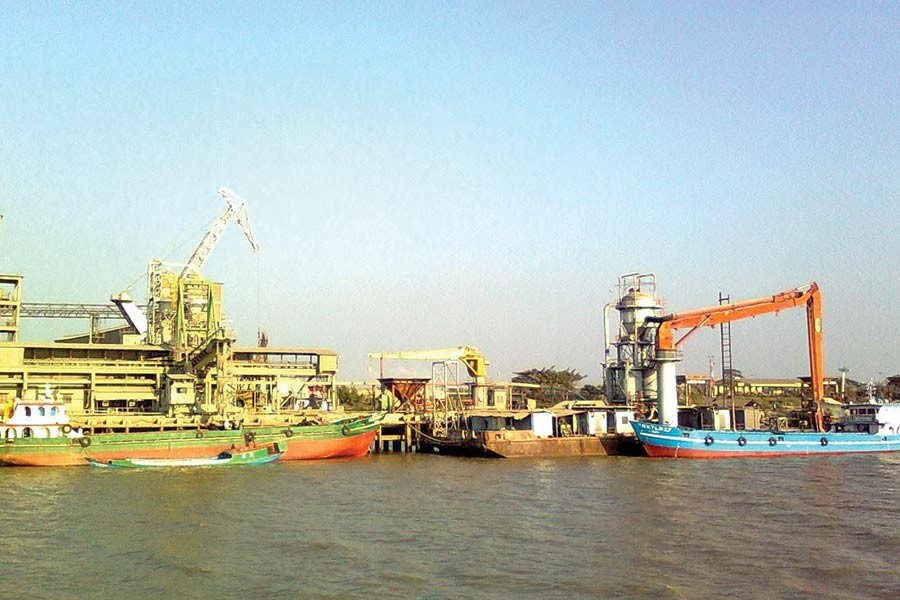Mongla Port — dealing with future maritime trade

Razon Chandra Saha and Md Shamsul Hoque
Published :
Updated :

Mongla is the second largest seaport of Bangladesh that features the great inland connections with the business hub Khulna by road and the facilities to act as backup of the country's principal seaport Chattogram. Its connectivity with the Padma Bridge has the potential to provide port transportation or maritime access to the capital city Dhaka as well, with lower cost and lesser time compared to Chattogram port -- subject to the improvement of port facilities.
Transport cost and time are the prime factors of seaborne trade, and sending cargo and container from the capital Dhaka to Chattogram via road is expensive and time consuming with the risk of pilferage on the road. The present traffic from Mongla Port to Dhaka is not considered realistic and cost effective by shippers and consignees. To cater to the needs, it is essential for the Mongla port authority to take effective measures to connect with the capital city through improved inland transport networks via Padma Bridge. In this connection, two important tasks are required by port authority immediately. Firstly, increasing the port facilities by engaging one terminal operator like the Port of Tanjung Pelepas, Malaysia where APM Terminal is managing all activities from marketing to operations. Hopefully, similar initiative will help minimise the investment cost in developing the port infrastructure and capital investment in purchasing handling equipment and others. Secondly, improving port connectivity by developing at least four lanes dedicated freight corridor from Mongla to Padma Bridge. At present, port development is not sufficient to attract the port users as well as international traders in choosing port and mode. In addition, Mongla port authority has to develop dry port nearby Dhaka and Padma Bridge with all kinds of port facilities for containerised cargo to facilitate inter-modal freight transportation. Most importantly, dredging is a big issue for Mongla port. there is a critical need to improve the navigability of Pashur channel for increasing the capacity of port in berthing all kind of vessels up to 9 to 10 meters draft.
Another important aspect of Mongla port is its potential to cater to transit facilitation by providing port facilities or maritime access to India, Nepal and Bhutan as well as to China. Although this issue is highly dependent on the desire of India because of its ownership of road at the point of Kakarvitta (Nepal) as well as a consensus on Banglabandha (in Bangladesh) in the cross-border point among Nepal, Bangladesh and India. The so called "chicken Neck" is the main obstacle in developing road transport network in South Asia. In addition, road geometric and operating conditions from Mongla Port to cross-border points are also not convenient for freight movement. Dedicated river container terminal like Pangaon is required in Khulna city to facilitate movement of transit cargo up to Banglabandha via road and Rohanpur via rail. Essentially, it will increase the confidence of the international and local traders.
Mongla port may be the most feasible port in the South Asia which can change the freight transport scenario in the region. Here, the role of India is very important for creating enabling environment and to utilise transit facilities by using Mongla port as a "win-win" situation for India and Bangladesh.
In order to secure the performance of Mongla port, four important considerations are suggested to the port authority for developing the port to provide seamless port and inland facilities. These are infrastructure, operational, regulatory and financial. In case of infrastructure, there is the need to increase the port jetty, number of handling equipment and others to provide on-time services to the port users and inland transport network's infrastructure development by taking the ownership of road from port to Padma Bridge and road-rail link to cross-border areas. After that, operational capacity needs to be improved by recruiting skilled human resources, full-time operations, improved information systems and dredging of the Pashur river for required navigability of ocean vessels to the port jetty. Then, regulatory considerations will focus on competitive port pricing, environmental streamlining and management decisions. Lastly, financial considerations will come in the process of port privatisation, public-private partnership and leasing to international terminal operators for providing efficient services.
It is high time the government put in place efforts to upgrade the operational standard of Mongla port to exploit the potential of regional demand. This, besides rendering Mongla highly income-generating will also substantially reduce the excessive load on Chattogram Port. The government should prioritise Mongla in allocating funds for capital investment.
Razon Chandra Saha is a PhD researcher of Bangladesh University of Professionals and Md. Shamsul Hoque is Professor of Bangladesh University of Engineering and Technology. Both are conducting research on intermodal freight transportation system for Bangladesh.


 For all latest news, follow The Financial Express Google News channel.
For all latest news, follow The Financial Express Google News channel.